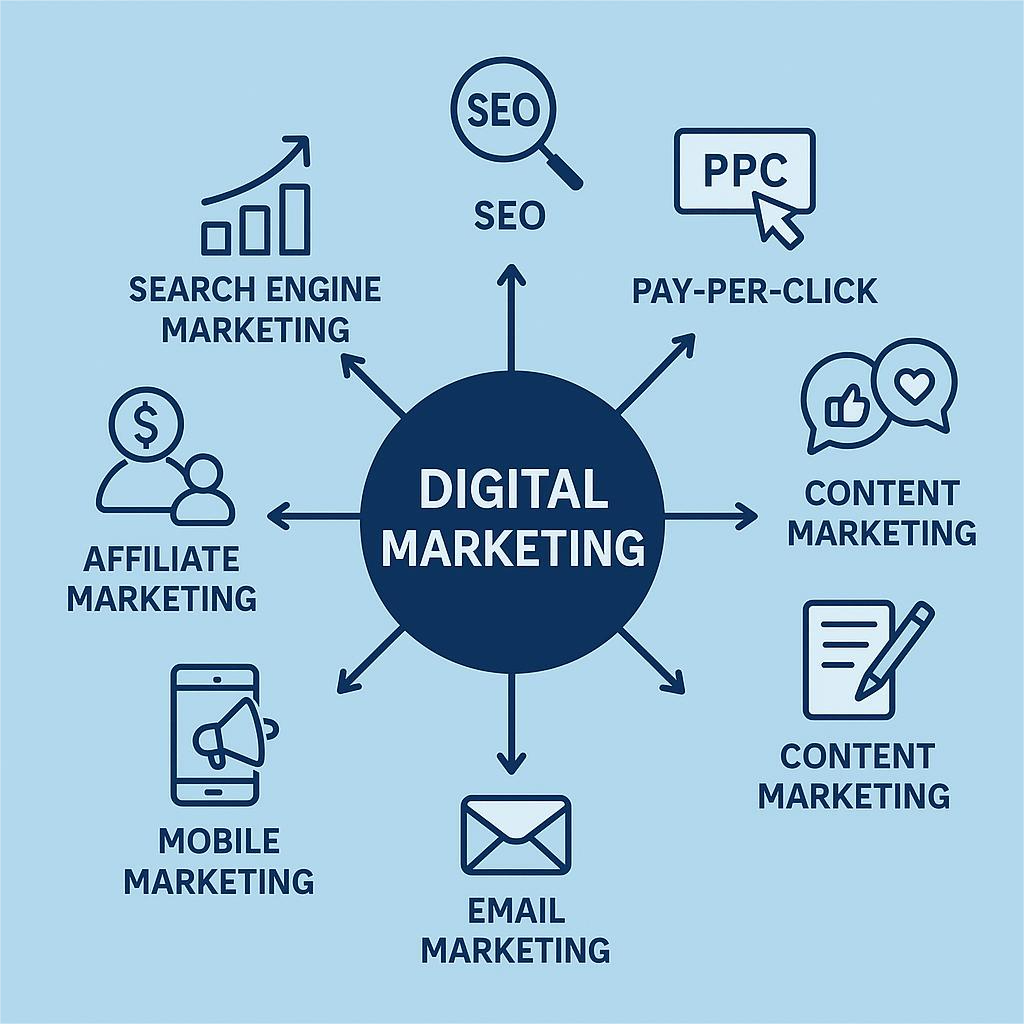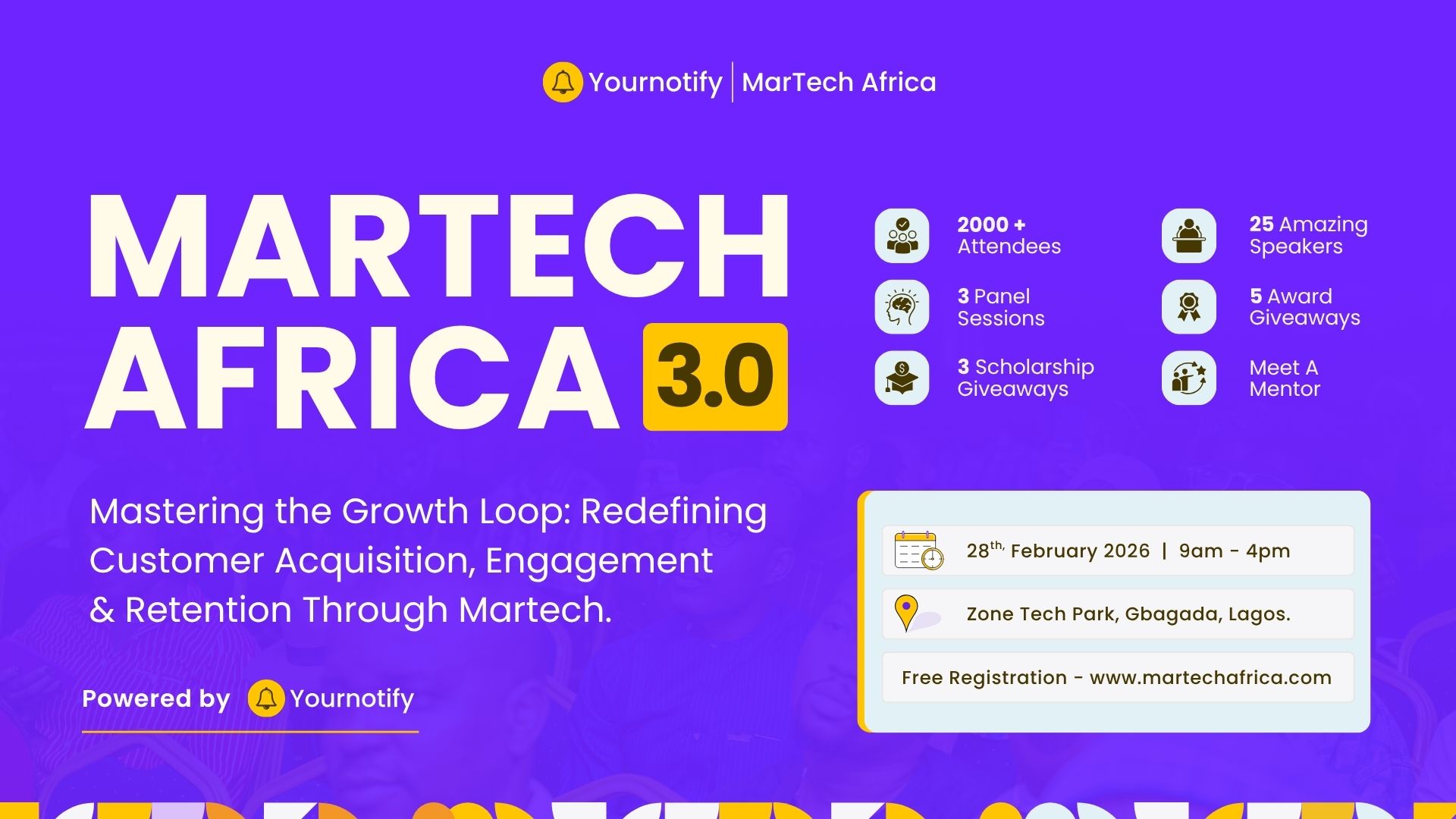For many African businesses, growth has traditionally been viewed as a linear journey: attract customers,…

10 Core Channels of Digital Marketing Every Business Should Know
In the early days of marketing, brands relied on traditional channels like billboards, magazines, radio, and television hoping the right audience would stumble upon their ads and take interest. While there were strategic decisions behind those placements, the process was slower and less precise. Today, digital marketing has transformed that landscape. With real-time data, targeted campaigns, and measurable results, reaching the right audience is faster and more accurate than ever.
The global digital advertising and marketing market for 2024 is estimated at $667 billion and is projected to reach $786.2 billion by 2026. If you’re a small startup or a global enterprise, embracing a wide range of digital strategies is essential. To attract, engage, and convert today’s savvy consumers, businesses must understand the core channels of digital marketing, the principles that guide them, and the foundational pillars that drive success.
The Four Pillars of Digital Marketing
It’s important to understand the foundational structure of all successful digital marketing efforts. These four pillars support every strategy, campaign and channels of digital marketing:
- Content: The backbone of digital marketing. Creating high-quality, informative, or entertaining content builds trust and drives engagement with your target audience
- Communication: Digital Marketing gives room for active two-way conversations with your audience through emails, feedback survey, social media, and live chats. Which will help your brand make better decisions and give adequate solution to your audience needs.
- Community: Cultivating a loyal base of users or followers who advocate for your brand and amplify your message. This makes it easy for other potential audience to gain trust in your brand fast.
- Commerce: When your audience trust your brand, you can then move on to turning online interactions into transactions through e-commerce platforms, landing pages, or digital checkouts.
The Core Channels of Digital Marketing
-
Search Engine Optimization (SEO)
SEO focuses on improving a website’s visibility in search engines like Google. It involves keyword research, content optimization, backlinks, and technical improvements to ensure your site appears in relevant searches organically.
When to Use It:
Use from day one. SEO is a long-term strategy and should be baked into your website structure and content creation from the beginning.
How to Use It:
Start by researching keywords your audience is searching for. Optimize all on-page elements, build backlinks, and regularly update your content to stay competitive in search rankings.
-
Search Engine Marketing (SEM)
While SEO earns traffic organically, Search Engine Marketing (SEM) refers to the broader strategy of gaining visibility through both paid advertising and organic search techniques. One of the most popular SEM tools is Google Ads, which helps businesses appear at the top of search results almost instantly if they’re willing to pay for it.
When to Use It:
Ideal for product launches, time-sensitive promotions, and businesses looking for quick traffic while SEO builds over time.
How to Use It:
Run targeted ad campaigns around relevant keywords while combining with SEO efforts to maximize both paid and organic visibility.
-
Pay-Per-Click Advertising (PPC)
PPC, a key component of SEM, is an advertising model where you pay only when someone clicks on your ad. These ads typically appear on search engines, websites, or social media platforms. The beauty of PPC is its measurability—you know exactly what you’re paying for and can adjust in real time.
When to Use It:
Use when you need measurable results fast e.g., to test product-market fit or drive traffic to landing pages.
How to Use It:
Define your audience, set a budget, write compelling ad copy, and use A/B testing to optimize performance over time.
-
Social Media Marketing (SMM)
This channel of digital marketing uses platforms like Facebook, Instagram, LinkedIn, TikTok, and X to build brand awareness, drive traffic, and foster engagement. Brands could use organic posts or paid promotions to connecting with your target audience where they spend most of their time. With over 5 billion active users across various platforms, social media is one of the most effective digital marketing channels you can rely on.
When to Use It:
It is essential for most B2C brands and increasingly important for B2B. Use to build brand awareness, run promotions, or launch new products.
How to Use It:
Create platform-specific content, use hashtags strategically, engage with followers, and invest in paid social ads for greater reach.
-
Content Marketing
Great marketing starts with great content. Content like they say is KING whether it’s blogs, videos, infographics, eBooks, or podcasts, content marketing focuses on delivering value to your audience not just selling. Content also fuels SEO, powers email campaigns, and feeds social media engagement.
When to Use It:
Make use of it always. Content is the backbone of most other marketing efforts like SEO, email, and social media.
How to Use It:
Create a content calendar, mix formats and topics tailored to different stages of the buyer’s journey and focus on solving real customer problems.
-
Email Marketing
It is still considered one of the highest ROI channels, email marketing is about building relationships through specific messages. Through email marketing, you can nurture leads or re-engage with old customers, segment your audience for proper messaging and personalize these messages.
When to Use It:
Best for nurturing leads, onboarding new users, retargeting, and re-engaging inactive customers.
How to Use It:
Segment your list based on behavior or demographics. Automate where possible (e.g., welcome series, cart abandonment emails) and personalize the messaging for better results.
-
Affiliate Marketing
In affiliate marketing, brands partner with individuals or companies (affiliates) who promote their products and earn a commission for each sale or lead they generate.
When to Use It:
It is great for eCommerce or service-based brands looking to expand reach with minimal upfront cost.
How to Use It:
Partner with relevant bloggers, niche websites, or creators. Provide them with tracking links, banners, and creative assets to promote your offerings.
-
Influencer Marketing
By partnering with influencers who are people with niche, engaged followings, businesses can promote their products in a more relatable and trustworthy way. It’s especially effective in industries like beauty, fashion, and tech.
When to Use It:
It is useful for product launches, building credibility, or entering new markets especially in lifestyle, beauty, fashion, tech, and wellness.
How to Use It:
Identify micro or macro influencers that align with your brand, choose influencers based on engagement, not just follower count and make sure to use authentic campaigns that allow influencers to maintain their voice.
-
Mobile Marketing
Just like the name, MOBILE, brands can reach more users accessing the web via their mobile phones as statistics has shown that 61% of all website traffic is generated from mobile phones. Mobile marketing targets users through SMS, mobile apps, push notifications, and responsive websites.
When to Use It:
Essential when your audience spends significant time on mobile devices which is nearly always and it is particularly useful for location-based promotions or app engagement.
How to Use It:
Ensure your website is mobile-optimized, Leverage geolocation features, use SMS campaigns sparingly but effectively, and offer app-only deals if applicable.
-
Video Marketing
Video is a powerful format that combines visuals, sound, and storytelling. This gives your audience another level of engagement that captures attention and drives action. YouTube explainers, TikTok reels and other video content fall under this category.
When to Use It:
Use when you want to increase engagement, explain complex ideas, or boost conversions. Especially effective for product demos, testimonials, and tutorials.
How to Use It:
Produce high-quality, short-form and long-form videos, focus on storytelling and clear calls to action, optimize titles, thumbnails, and tags for visibility.
Each channels of digital marketing serves a unique purpose and works best when aligned with your business goals and audience behavior. By understanding when and how to use these strategies, brands can build stronger online presence, drive targeted traffic, and ultimately boost conversions in a rapidly evolving digital landscape.
Related Content
Marketing Technology Strategy for B2B vs. B2C: Key Differences



